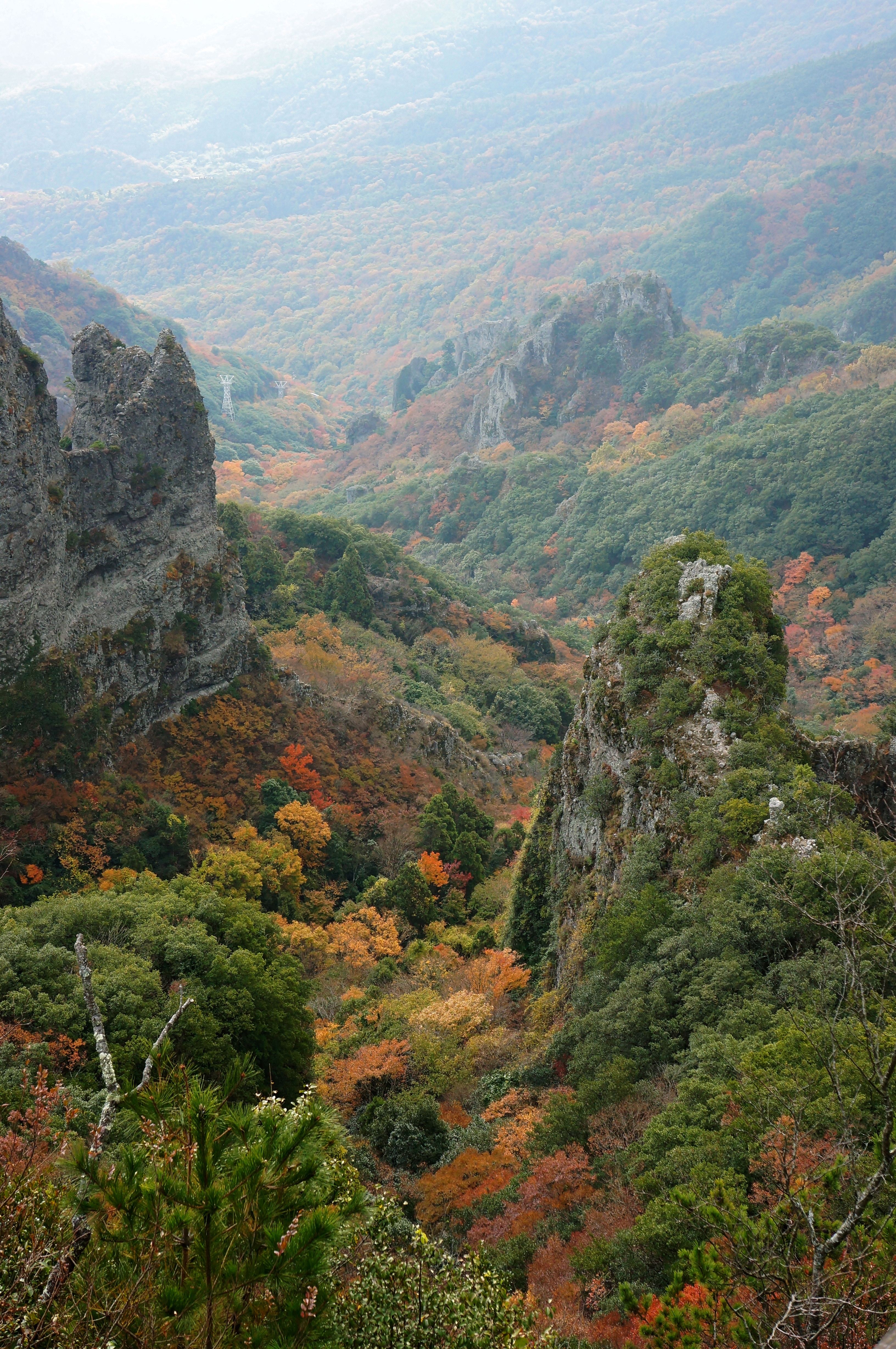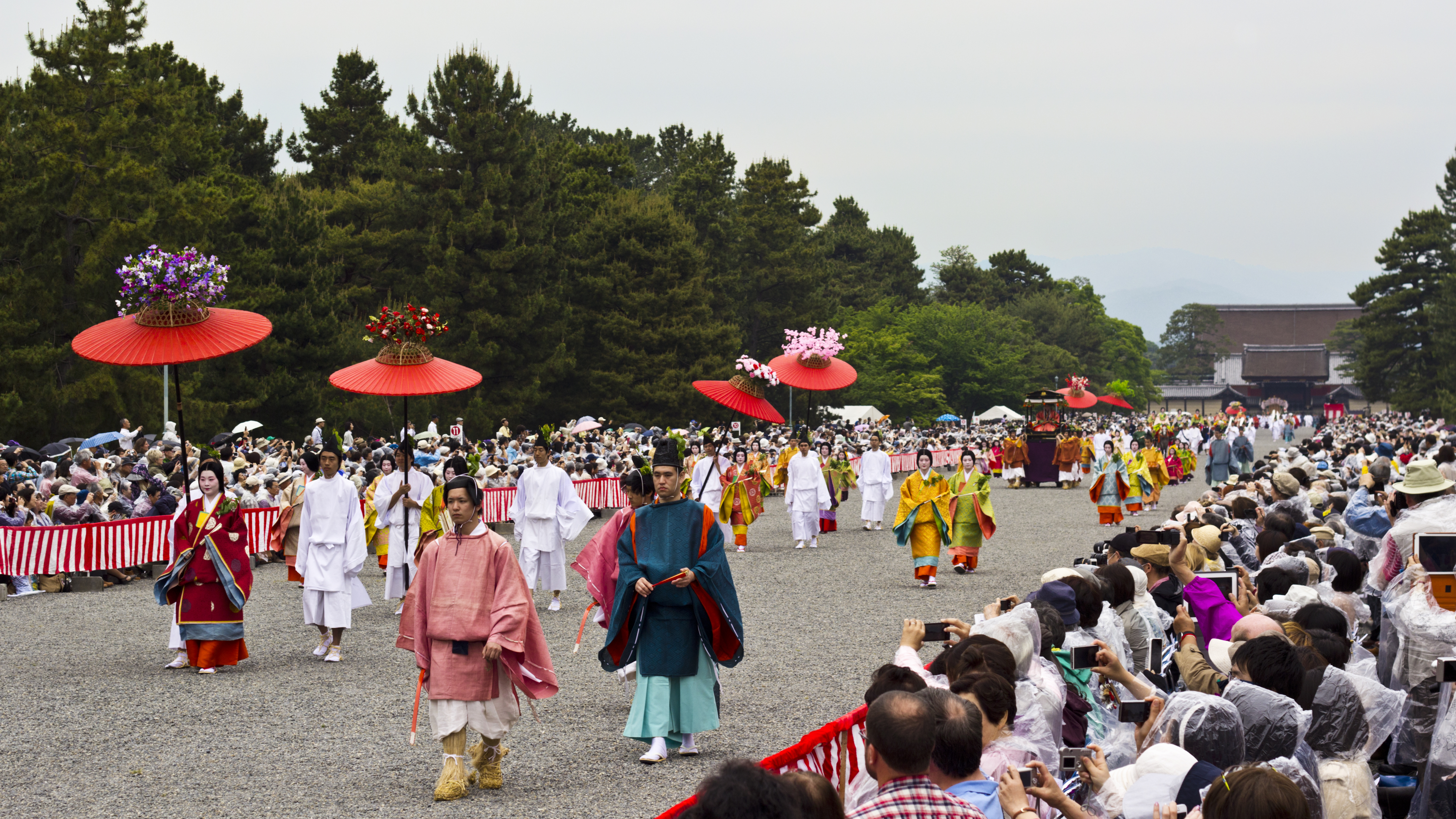|
Olive Jinja
is a Greek-style Shinto shrine on the island of Shōdoshima in the Inland Sea, Kagawa Prefecture, Japan. Constructed in 1973 and standing amidst a grove of olives - a thriving industry on the island - the shrine takes the form of a replica Greek temple, with stylobate, Doric columns, entablature with triglyphs, and bronze pedimental reliefs. There is an annual festival with Greek themes. The shrine is located within Setonaikai National Park. See also * Ancient Greek architecture * Olive branch * Kankakei The Canyon, gorge of is a Cultural Properties of Japan, nationally designated Monuments of Japan, Place of Scenic Beauty on the island of Shōdo Island, Shōdo-shima, Kagawa Prefecture, Japan. Part of the Setonaikai National Park, the heights rise ... References {{Authority control Shinto shrines in Kagawa Prefecture Folly buildings Greek Revival buildings 1970s in Japan Religious buildings and structures completed in 1973 1973 establishments in Japan ... [...More Info...] [...Related Items...] OR: [Wikipedia] [Google] [Baidu] |
Shinto
, also called Shintoism, is a religion originating in Japan. Classified as an East Asian religions, East Asian religion by Religious studies, scholars of religion, it is often regarded by its practitioners as Japan's indigenous religion and as a nature religion. Scholars sometimes call its practitioners ''Shintoists'', although adherents rarely use that term themselves. With no central authority in control of Shinto, there is much diversity of belief and practice evident among practitioners. A polytheism, polytheistic and animism, animistic religion, Shinto revolves around supernatural entities called the (神). The are believed to inhabit all things, including forces of nature and prominent landscape locations. The are worshipped at household shrines, family shrines, and Shinto shrine, ''jinja'' public shrines. The latter are staffed by priests, known as , who oversee offerings of food and drink to the specific enshrined at that location. This is done to cultivate harmony ... [...More Info...] [...Related Items...] OR: [Wikipedia] [Google] [Baidu] |
Bronze Sculpture
Bronze is the most popular metal for Casting (metalworking), cast metal sculptures; a cast bronze sculpture is often called simply "a bronze". It can be used for statues, singly or in groups, reliefs, and small statuettes and figurines, as well as bronze elements to be fitted to other objects such as furniture. It is often gilding, gilded to give gilt-bronze or ormolu. Common bronze alloys have the unusual and desirable property of expanding slightly just before they set, thus filling the finest details of a mould. Then, as the bronze cools, it shrinks a little, making it easier to separate from the mould. Their strength and wikt:ductility, ductility (lack of brittleness) is an advantage when figures in action poses are to be created, especially when compared to various ceramic or stone materials (such as marble sculpture). These qualities allow the creation of extended figures, as in ''Jeté'', or figures that have small cross sections in their support, such as the Richard ... [...More Info...] [...Related Items...] OR: [Wikipedia] [Google] [Baidu] |
1970s In Japan
In Japan during the 1970s, the economy was hit by the oil shock and the Nixon shock. Energy consumption dropped and industrial production increased. During the 1970s energy crisis, Japan introduced energy-saving measures and became a hub of miniaturization. The women's liberation movement in Japan, known as ''ũman ribu,'' began to gain momentum with feminist groups starting to form in 1970. In November 1973, a tissue shortage in Japan was reported by news agencies. Culture Music During the 1970s, Japan had the second largest music market in the world.Billboard. 19 December 1970, pp 12 52 22 December 1979p 14 1970s Japanese music included kayōkyoku, idols, new music, rock and enka. Musical artists in the 1970s included, in particular, Momoe Yamaguchi, Saori Minami, the Candies, Pink Lady, Hiromi Go, Hideki Saijo, Yuming, Saki Kubota, Judy Ongg and Sachiko Kobayashi. The Best Ten , was a Japanese music chart television program broadcast on TBS Television (Japan), TBS ... [...More Info...] [...Related Items...] OR: [Wikipedia] [Google] [Baidu] |
Greek Revival Buildings
Greek may refer to: Anything of, from, or related to Greece, a country in Southern Europe: *Greeks, an ethnic group *Greek language, a branch of the Indo-European language family **Proto-Greek language, the assumed last common ancestor of all known varieties of Greek **Mycenaean Greek, most ancient attested form of the language (16th to 11th centuries BC) **Ancient Greek, forms of the language used c. 1000–330 BC **Koine Greek, common form of Greek spoken and written during Classical antiquity **Medieval Greek or Byzantine Language, language used between the Middle Ages and the Ottoman conquest of Constantinople **Modern Greek, varieties spoken in the modern era (from 1453 AD) *Greek alphabet, script used to write the Greek language *Greek Orthodox Church, several Churches of the Eastern Orthodox Church *Ancient Greece, the ancient civilization before the end of Antiquity *Old Greek, the language as spoken from Late Antiquity to around 1500 AD *Greek mythology, a body of myths or ... [...More Info...] [...Related Items...] OR: [Wikipedia] [Google] [Baidu] |
Folly Buildings
In architecture, a folly is a building constructed primarily for decoration, but suggesting through its appearance some other purpose, or of such extravagant appearance that it transcends the range of usual garden buildings. Eighteenth-century English landscape gardening and French landscape gardening often featured mock Roman temples, symbolising classical virtues. Other 18th-century garden follies imitated Chinese temples, Egyptian pyramids, ruined medieval castles, abbeys, or Tatar tents, to represent different continents or historical eras. Sometimes they represented rustic villages, mills and cottages, to symbolise rural virtues. Many follies, particularly during times of famine, such as the Great Famine in Ireland, were built as a form of poor relief, to provide employment for peasants and unemployed artisans. In English, the term began as "a popular name for any costly structure considered to have shown folly in the builder", the ''Oxford English Dictionary'''s defi ... [...More Info...] [...Related Items...] OR: [Wikipedia] [Google] [Baidu] |
Shinto Shrines In Kagawa Prefecture
, also called Shintoism, is a religion originating in Japan. Classified as an East Asian religion by scholars of religion, it is often regarded by its practitioners as Japan's indigenous religion and as a nature religion. Scholars sometimes call its practitioners ''Shintoists'', although adherents rarely use that term themselves. With no central authority in control of Shinto, there is much diversity of belief and practice evident among practitioners. A polytheistic and animistic religion, Shinto revolves around supernatural entities called the (神). The are believed to inhabit all things, including forces of nature and prominent landscape locations. The are worshipped at household shrines, family shrines, and ''jinja'' public shrines. The latter are staffed by priests, known as , who oversee offerings of food and drink to the specific enshrined at that location. This is done to cultivate harmony between humans and and to solicit the latter's blessing. Other common ri ... [...More Info...] [...Related Items...] OR: [Wikipedia] [Google] [Baidu] |
Kankakei
The Canyon, gorge of is a Cultural Properties of Japan, nationally designated Monuments of Japan, Place of Scenic Beauty on the island of Shōdo Island, Shōdo-shima, Kagawa Prefecture, Japan. Part of the Setonaikai National Park, the heights rise to 812 m. The area is celebrated for its momiji, Japanese maple trees. Volunteers formed a preservation society in 1898 and when, in 1912, expropriation of the area was attempted, a soy sauce magnate stepped in to ensure its preservation. In 1927 Kankakei was selected as one of the 100 Landscapes of Japan (Shōwa era), 100 Landscapes of Japan. Landmarks The Front Side 12 # Tsutenso # Kountei # Kinbyobu # Rosando # Senjogan # Gyokujunpo # Gachoseki # Soundan # Kayogaku # Eboshiiwa # Joraheki # Shibocho File:201211Kankakei Shodoshima Kagawa pref Japan01s3.jpg, 03. Kinbyobu File:201211Kankakei Shodoshima Kagawa pref Japan02s3.jpg, 06. Gyokujunpo File:201211Kankakei Shodoshima Kagawa pref Japan05n.jpg, 08. Soundan File:201211Kankakei Shodos ... [...More Info...] [...Related Items...] OR: [Wikipedia] [Google] [Baidu] |
Olive Branch
The olive branch, a ramus of '' Olea europaea'', is a symbol of peace. It is generally associated with the customs of ancient Greece and ancient Rome, and is connected with supplication to divine beings and persons in power. Likewise, it is found in most cultures of the Mediterranean Basin and thence expanded to become an almost universally recognized peace symbol in the modern world. In the Greco-Roman world In Greek tradition, a ''hiketeria'' (ἱκετηρία) was an olive branch held by supplicants to show their status as such when approaching persons of power or in temples when supplicating the gods. In Greek mythology, Athena competed with Poseidon for possession of Athens. Poseidon claimed possession by thrusting his trident into the Acropolis, where a well of sea-water gushed out. Athena took possession by planting the first olive tree beside the well. The court of gods and goddesses ruled that Athena had the better right to the land because she had given it ... [...More Info...] [...Related Items...] OR: [Wikipedia] [Google] [Baidu] |
Ministry Of The Environment (Japan)
The is a Cabinet-level ministry of the government of Japan responsible for global environmental conservation, pollution control, and nature conservation. The ministry was formed in 2001 from the sub-cabinet level Environmental Agency established in 1971. The Minister of the Environment is a member of the Cabinet of Japan and is chosen by the Prime Minister, usually from among members of the Diet. In March 2006, the then-Minister of the Environment Yuriko Koike, created a '' furoshiki'' cloth to promote its use in the modern world. In August 2011, the Cabinet of Japan approved a plan to establish a new energy watchdog under the Environment Ministry, and the Nuclear Regulation Authority was founded on September 19, 2012. Organization * Minister's Secretariat (大臣官房) * (総合環境政策統括官) * Global Environment Bureau (地球環境局) * Environment Management Bureau (水・大気環境局) * Nature Conservation Bureau (自然環境局) * (環境再生・� ... [...More Info...] [...Related Items...] OR: [Wikipedia] [Google] [Baidu] |
Setonaikai National Park
is a Japanese national park, comprising areas of Japan's Seto Inland Sea, and of ten bordering Prefectures of Japan, prefectures. Designated a national park in 1934, it has since been expanded several times. It contains about 3,000 islands, known as the Setouchi Islands, including the well-known Itsukushima. As the park encompasses many non-contiguous areas, and covers a tiny proportion of the Inland Sea's total extent, control and protection is problematic; much of the Inland Sea of Japan#Industry, wider area is heavily industrialized. History In 1934, when the area was envisioned as Japan’s first national park, it was far smaller than the expanse of today. Sixteen years later, in 1950, an expansion would seek to include other iconic sites in the region, bringing the total area roughly up to that of the present-day. Setonaikai is the biggest national park in Japan. In 1996, Itsukushima Shrine (in Hiroshima prefecture) was registered as a “cultural site of world heritage” ... [...More Info...] [...Related Items...] OR: [Wikipedia] [Google] [Baidu] |
Berg Publishers
Berg Publishers was an academic publishing company based in Oxford, Oxfordshire, England and Providence, Rhode Island, United States. It was founded in the United Kingdom in 1983 by Marion Berghahn. Berg published monographs, textbooks, reference works, and academic journals. It focused on fashion, design, anthropology, history, and cultural studies. Operations in Providence began shortly after Berghahn's husband, historian Volker Berghahn, accepted a chair at Brown University in 1988. History In 2003, Berg Publishers was bought from its owners by its managers Kathryn Earle and Sara Everett. The original owner, Marion Berghahn, was forced out in 1994 and immediately founded Berghahn Books, a leading academic publisher in the fields of anthropology and social sciences. The Book Industry Communication (BIC), a trade standards group for electronic commerce and supply chain efficiency, awarded Berg its BIC Product Data Excellence Gold Award in 2007–2008 and its e4books pr ... [...More Info...] [...Related Items...] OR: [Wikipedia] [Google] [Baidu] |
Japanese Festivals
Japanese festivals, or , are traditional festive occasions often celebrated with dance and music in Japan. The origin of the word ''matsuri'' is related to the ; there are theories that the word ''matsuri'' is derived from meaning "to wait (for the ''kami'' to descend)", meaning "to make offerings to the ''kami''", and meaning "to obey the ''kami''". The theory that it is derived from ''matsurau'' is the most popular. It is estimated that there are between 100,000 and 300,000 festivals across Japan, generating an annual economic impact of 530 billion yen as of 2019. As of 2024, 33 of these festivals have been registered as UNESCO Intangible Cultural Heritage Lists as "Yama, Hoko, Yatai, float festivals in Japan". Various folk dances, costume processions, '' kagura'', '' dengaku'', '' bugaku'', and '' noh'' performed at festivals are also registered as UNESCO Intangible Cultural Heritage Lists. For example, 41 folk dances including ''bon odori'' from various regions of Japan are ... [...More Info...] [...Related Items...] OR: [Wikipedia] [Google] [Baidu] |








